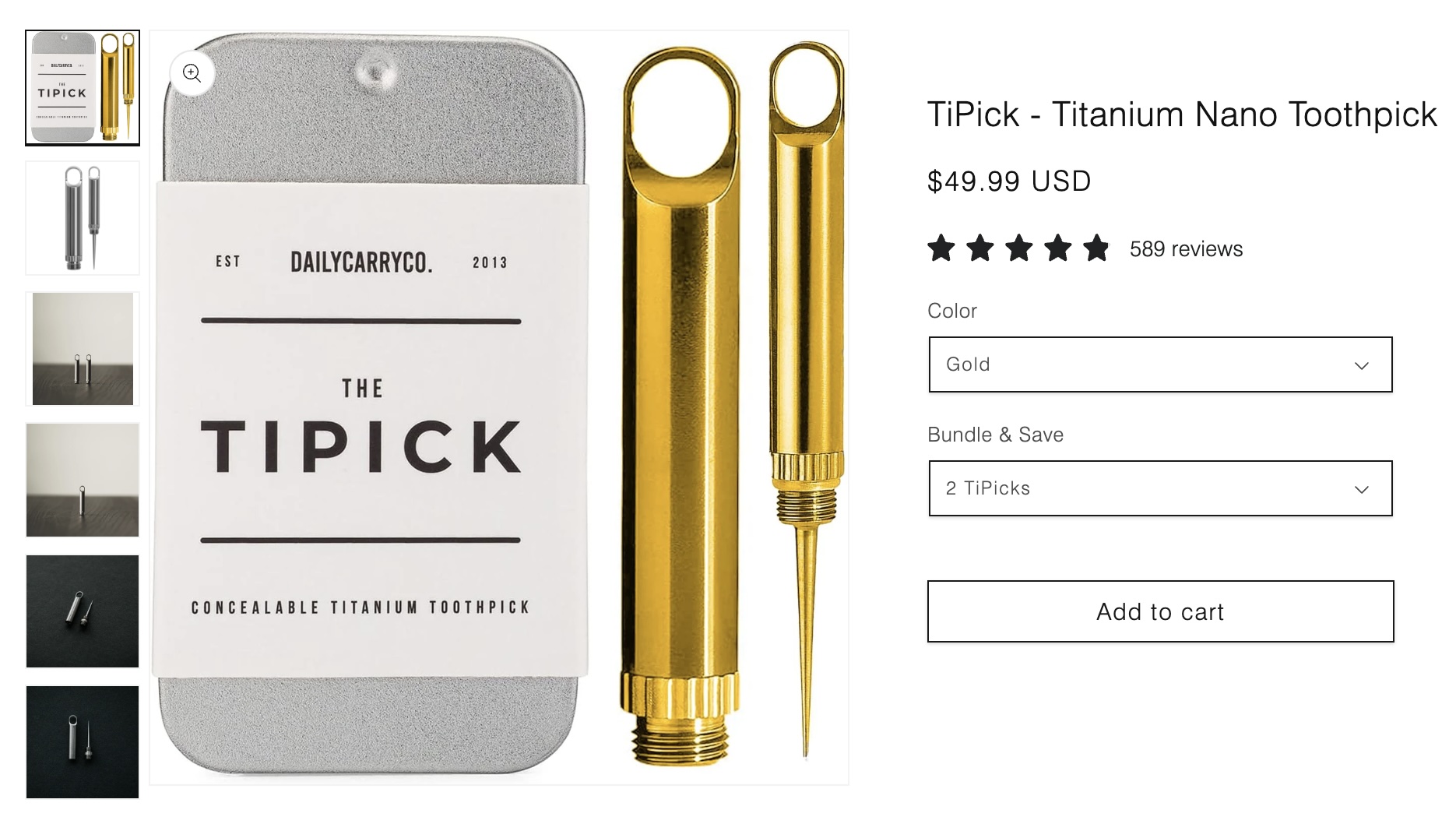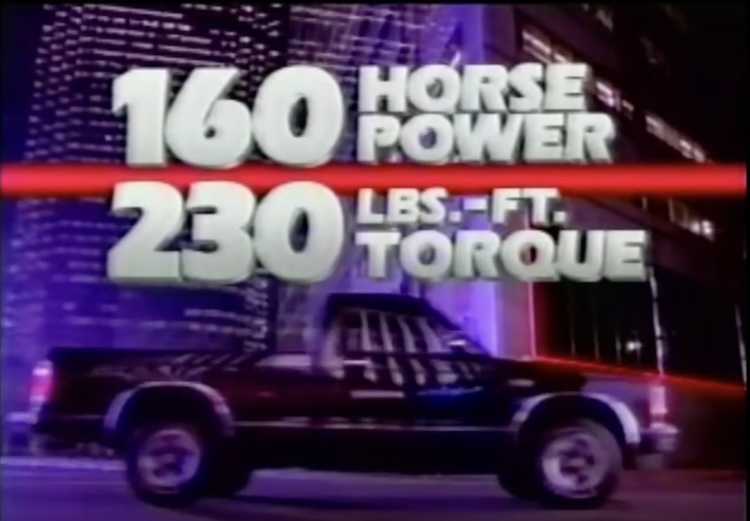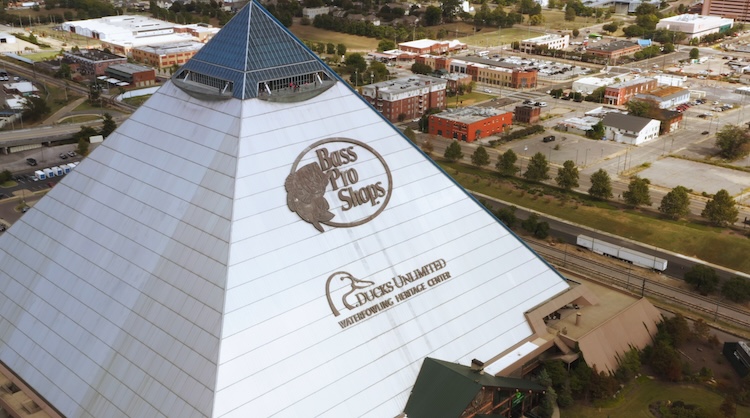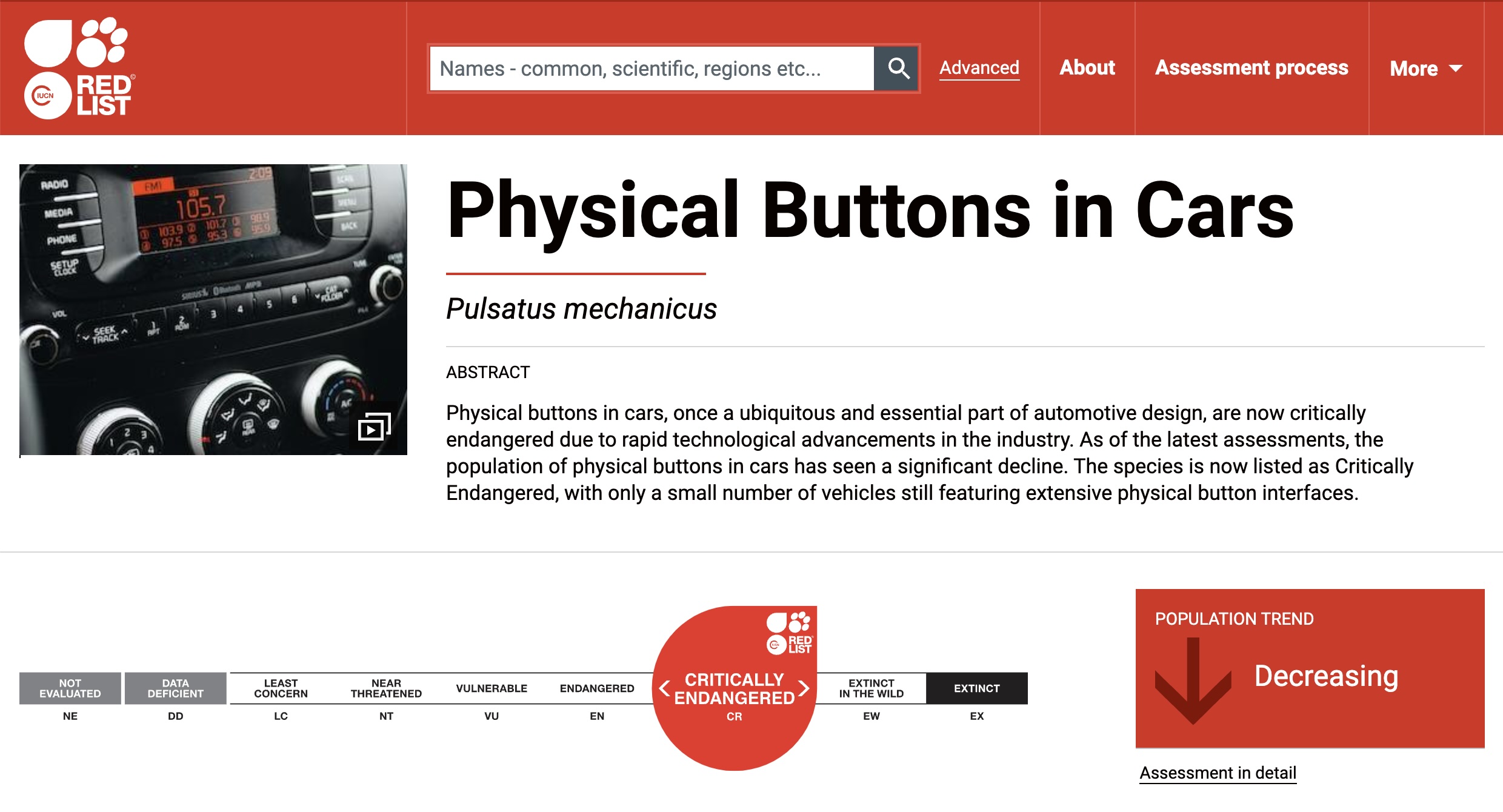How companies trick you into overpaying
This blog post is now a video! Watch it on YouTube:
If I gift you a $55 coat, you would think I got you a cheap coat, because I would expect coats to cost between $50 to $500, so $55 seems cheap.
But if I gift you a $45 scarf, it would seem like I got you an expensive, luxurious scarf, because I would expect scarves to cost between $5 to $50.
If I only have a fixed budget to spend, then by gifting you a scarf, even though I spent $10 less than I did on the coat, I get more social value from the scarf by being seen as more generous, without actually spending more money, so I can pretend to be rich while being a cheap asshole!1
Now when I’m doing the shopping, I see all of the options available to me. But when you receive a gift, you don’t see everything I considered but didn’t purchase.
It wouldn’t occur to you to compare your $45 scarf to things that I did not buy, like a $55 coat, a $50 deodorant, a $50 bicycle, or a $50 gold-plated toothpick.

You only see the final gift, so the cheaper the category of objects, the more expensive my particular gift will seem compared to other items in that category.
A $50 bicycle is a rusty piece of junk that you’d be embarrassed to ride. But a $50 deodorant is so precious you would only use it for special occasions like weddings or funerals.
What other psychological tricks like this are companies using against you? And how can you use some of those same tricks to impress your friends without spending a lot of money?
Utility vs. Signalling
There are two mindsets you can have when you go shopping. You can either go shopping for utility, or for signalling.
Utilitarian shopping is for practical reasons, like buying a Honda Fit: It’s reliable, comfortable, has lots of cargo space, gets great gas mileage, and no one will ever simp for your car.
If you look at old car advertisements, you’ll notice that many of them focus on promoting a product’s tangible benefits. They talk only about the features that you get with the product: reclining seats, gas mileage, or AM radio.
 80s car commercials tell you about all the features of the car
80s car commercials tell you about all the features of the car
But if you look at car ads these days, they don’t talk about the features of the car at all. Instead, it’s about the lifestyle you can live or the “type of person you are” who buys a car like this.
 This car ad doesn’t tell me anything about how many airbags it has, the towing capacity, or
passenger comfort. It doesn’t even tell me how much it costs!
This car ad doesn’t tell me anything about how many airbags it has, the towing capacity, or
passenger comfort. It doesn’t even tell me how much it costs!
This is shopping for “signalling”. The book Spent describes the following concepts in this blog post, including three ways you can signal: Waste, Precision, and Reputation
1. Waste
What is waste? Waste is simply an impressive command of resources, and was historically how rich people showed off their status.
Imagine the Palace of Versailles, the Great Pyramids of Giza, or the Terracotta Warriors in China.
Modern examples would be like a large, loud, smoke-belching, F-150 pickup truck; or Las Vegas: gaudy casinos, golf courses in the middle of the desert, and giant replicas of actual monuments like the Bass Pro Shops pyramid.
 Yeah! ‘Murica! 🇺🇸🇺🇸🇺🇸🦅💥🎆
Yeah! ‘Murica! 🇺🇸🇺🇸🇺🇸🦅💥🎆
Waste is going out of fashion now, because we want to protect the environment, and we’re seeing the negative consequences waste has on mother nature.
Waste is the simplest form of signalling, but it’s also the bluntest one, as you do not require any more intelligence than a bird building its nest out of shiny discarded aluminum foil, which is why conspicuous waste often comes across as so “tacky”.
You also can’t keep making stuff bigger forever, it gets too impractical.
An F-150 truck is so large that you need a step-stool to get on, the tires are so enormous that they destroy your driveway, and the actual usable part, the truck bed, they had to make smaller or else it wouldn’t fit into a normal parking spot.

Despite all this, waste remains popular to signal because it’s the most “honest” form of signalling. You cannot fake having a large amount of resources, it’s as simple as that.
You can make a fake handbag, or print a fake Harvard degree on a regular 8.5” × 11” piece of printer paper.
You can’t fake a giant, sprawling McMansion with more garages than cars; you have to actually build it.
But science has a solution! With modern industrialized manufacturing and mass production, it’s actually getting easier to fake waste.
If you don’t have a lot of money, you can still buy gorgeous-looking designer furniture that isn’t made out of real wood, but engineered wood, which is way cheaper to produce and still lets you feel like you live in a magazine.
Paradoxically, mass manufacturing means that it’s more expensive to make custom, handmade goods than something standardized for the mass market. This leads to our second form of signalling, Precision.
2. Precision
Precision is about showing off how much labour, effort, and artisanship you put into the product.
For example: fabergé eggs, intricately ornate furniture that’s harder to clean and requires laborious dusting, or anything “hand made”, like a $30,000 mattress made out of horse hair.
Smart fridges, smart lightbulbs, and smart toothbrushes are also about precision: you gotta be a smart human to operate anything more complex than a can opener these days.
Precision is the environmentally-friendly answer to waste: instead of getting an enormous truck, you can buy a zero-emission electric car with fancy self-driving sensors and dynamic headlights.
A modern EV consumes way less raw materials—we even removed all the buttons for touch screens—but it demands way more knowledge from the consumer.
One day you’ll try driving in the rain but then discover your automatic windshield wipers have a computer virus and then you’ll need an engineering degree from MIT to fix it.
You also can’t keep increasing precision forever; it’s difficult to find big technological improvements, so at a certain point you need to hype up even minor improvements that aren’t actually that big a deal.
Do you even remember what the difference is between an iPhone 15 and an iPhone 14? What did they add? A USB-C port? Apple didn’t even invent that?!
It may seem like you’re wasting less by buying something more advanced and efficient, but there’s still an environmental cost for the complex and high-tech manufacturing required.
Just imagine all the rare earth metals being extracted from dozens of countries, put on container ships crisscrossing the oceans to be delivered into a Class 5 cleanroom so it can be assembled into a smartphone.
As a consumer, your hands are cleaann—we’ve taken all your environmental waste and just brushed it under the rug of all the factories distributed around the world.
But our third form of signalling has even less environmental impact: Reputation
3. Reputation
Reputation has nothing to do with the actual product and is all about the brand and name recognition of what you’re buying.
For example: not just any watch, but a Rolex. Not just any degree, but a Harvard degree. Voting for the most popular candidate for president. Or checking the subscriber count on a YouTube channel (you are subscribed to my YouTube channel, right?)
But is a Rolex that much better at keeping time than a Timex? Or is a Gucci handbag that much more durable and better at holding your stuff?
Coca-Cola isn’t more difficult to produce than your generic store-brand soda. But people still perceive Coca-Cola to be “better” than the generic version.
A brand isn’t necessarily better—its entire value comes from being more well-known.
A brand is totally dematerialized—Harvard is not the buildings and libraries—every school has those.
Harvard exists only inside your brain!
But if I slap a brand on a product, that physical object suddenly becomes much more appealing. A brand is the most environmentally friendly thing of all! It costs zero raw materials to manufacture a purely abstract concept like “Harvard”.
But reputation still comes at a cost—there’s only a finite amount of attention in the world, and to become famous you have to compete in an escalating arms race of advertising dollars to outspend everyone else who also wants to become well-known.
Coca-Cola spent $5 billion on advertising in 2023.2
It already costs more than $1 billion dollars to run for president of the United States.3
And it costs me three months of research to write this blog post, just to get you to sign up for the email list. 😉
Is there a way out of all this? A way to go shopping that doesn’t require wasting resources, labour, or attention?
I want to introduce you to what I think is the best reason to shop: Narrative value.
Narrative value
What companies want is to get away with not having to make their products actually good and useful, because that’s expensive.
What they want is to influence you into buying their products because you think it makes you cool, or shows off a certain lifestyle.
If you care about waste, precision, or reputation, you’re more willing to overpay because you’re shopping for signalling, and not for utilitarian reasons. The companies can then charge a higher price without having to make their products higher quality.
“Athletic people wear Nike shoes”, “Hippies wear Toms shoes”, “Fashionable people wear Cole Haan shoes”, or “Tech bros wear Allbirds” are all manufactured narratives!
The companies have made up these stories about “the type of person you are when you wear these shoes” as a shortcut, so you can just adopt the stereotype they’ve advertised without having to develop a personality yourself.
Even if you have no personality, and have never played basketball before, you can just charge a pair of Nike Air Jordans to your credit card, and you’ll seem sporty and athletic, and quickly and easily adopt a personality handed to you by a multinational corporation.
But your purchases do not happen in a vacuum! There’s an entire sociocultural context of social relationships available to you if you think carefully about the narrative, or story that you can tell about your purchase.
If I say “I love your shoes, where did you get them?”, that’s an invitation for a whole world of conversation that you can open for me.
If the only story you can answer with is “Oh I got it from Amazon”, that invites the least conversation, there’s nothing you’ve given me to jump off of to learn more about you.
But if you say: “I got these during the pandemic when I started running as a hobby. I didn’t end up enjoying it and stopped after the first few times but I met my roommate at the running club I joined!”
There’s so much in that narrative I can follow up with!
I can empathize with this shared experience of what it was like to try to stay in shape or find a hobby during the pandemic, it gives me a little glimpse into the important people in your life like your roommate, and it demonstrates your good social skills of getting along with him.
You might object, “Okay Bill, I’m smarter than all these companies and I can save money by being a very rational person and only care about the tangible benefits of what I buy. I make purchasing decisions purely logically by always getting the best value-for-money option”.
That might be true about you, but you’ve just explained another narrative about yourself! The narrative that you just told me is “I am a very analytical person who only has book smarts and no emotions”. And that narrative is boring! You cannot escape your narrative.
If you’re going shopping, just be honest with yourself that you’re doing it to show off, because we all do! We’re all humans, and we’re all trying to present some image about ourselves to the outside world. There’s no escaping that, so you might as well put in a bit more effort into planning your shopping.
If you can think in advance about the narrative you want to portray before you do your shopping, you can tune your purchases more carefully and this will let you spend less money, while showing off more of your traits at the same time, making you more interesting and cool!
Is shopping for narrative value ethical? I think it’s ethical as long as you’re honest and only trying to highlight traits that you actually have, instead of trying to portray yourself as somebody that you’re not.
I’m lazy at organizing my home, and I will never be able to take care of a cast iron pan. It’s just too much work to clean properly and season it all the time, so if I’m telling stories about how much I love cast iron pans, not only is this misleading, but the pan itself will just be a frustrating reminder of my failure to take care of it every time I see the pan getting sad and rusty in the sink.
I have to do some self-reflection about my weaknesses to avoid using shopping to overcompensate for something I’m insecure about.
I think one reason that people can struggle psychologically to budget and save money is that shopping fills a hole to compensate for your lack of personality. So if you tell someone to stop shopping, it’s excruciatingly painful—like telling you to sacrifice a part of your identity and give up this personality that you’ve purchased.
Well, I’m here to tell you that instead of buying stuff to create your personality, there are so many practical alternatives to show off your personality without paying the full retail price.
We’ll talk about some of those alternatives now:
7 alternatives to shopping
1. Pay for active instead of passive experiences
Even if you don’t go shopping for physical products, and you spend most of your money on paying for experiences, the idea of narrative value still applies.
Experiences also fall on a spectrum between utility and signalling.
For example: travel. You can travel passively, like going to Spain to eat food or visit museums, or you can travel to develop your personality by meeting the local community, learning a new language, and building empathy for people from other cultures.
If you just want the pure hedonistic experience of going to a concert, or hiking in the mountains, then great! There’s nothing wrong with that. And you don’t need to worry about signalling or narratives, you’re totally on the utilitarian end of just paying for experiences for their own sake.
But if you’re trying to show off, then instead of hiking to take a selfie of yourself in front of the same mountain that thousands of other people have also seen, you can consider building a narrative like “I enjoy hiking the White Mountains because being in nature is how I come up with creative ideas for my blog.” (😭I’m not like the other boys okayy!!!!)
2. Borrow it
I host a lot of events, and I could move into a larger, fancier apartment downtown, but this would triple my housing costs.
Even though I can afford it, realistically, I only need a large space about once a month or so, not every week, and certainly not every day.
So instead, what I do is ask for favours from my friends to host parties that get especially large in their apartments instead.
Borrowing stuff from your friends lets you show off that you have deep enough friendships with people who trust you with their stuff, that you will take care of what you borrowed and be able to return it in good condition, without breaking anything.
Borrowing also helps give me an excuse to hang out with my friends more, as it makes it safe for them to feel like they can ask for a favour from me in return, which I’m happy to fulfill, and helps keep us more interconnected instead of being atomized individuals with no connections to a community.
3. Repair it
One of my housemates saw an ad on Craigslist giving away a broken hot tub for free, so he took the opportunity to swoop in and get some friends to help him load it up into his truck, whereupon he brought it home and was able to successfully diagnose the problem. The hot tub had a broken pump and he was able to repair it and get it working again by just getting a cheap replacement pump.
Now when he invites friends over, he has an awesome story to tell about his tight-knit network of friends who were able to help him move a big, heavy hot tub, his skills in being able to repair it, his good sense of thrift, and he still has a sweet hot tub to enjoy!!! Plus he didn’t even need to pay for it!!!
Compare this to if he paid for a new hot tub at full price: the only thing he would be able to show off is the hot tub, and none of the other traits!
4. Improve it
You probably already have what you want to buy, you’re just not satisfied because you’re missing some feature from the latest, shiniest version. But you can just upgrade your existing product instead of buying a new one.
I drive a 2014 Mustang—I love my car, but it’s pretty outdated compared to the latest most technologically advanced version from 2024. But I don’t actually need all the latest features. The only thing my 10-year-old car is missing is bluetooth.
Instead of spending $40,000 to buy a new car from 2024, I can get a $10 bluetooth to AUX cord adapter that automatically connects to my phone, and suddenly I have the only feature I actually need from the brand-new car, while spending 99.9% less money.
Even better, my 10-year-old car doesn’t have a touch screen, but it has actual, real, physical buttons you can press, which are basically on the IUCN’s list of endangered species at this point.

5. Get it used
I’ll admit it, fast fashion is a lot of fun. But what’s not fun are all the sweatshops, child labour, and lead paint in the clothes.
But I can still have fun with fashion by getting my clothes secondhand from thrift stores.
A shirt doesn’t have to be “new” to be fun, it just has to be new and novel to me.
I feel like it’s getting trendy again to go treasure hunting at thrift stores—if someone says “hey, cool shirt Bill!” I can easily reply: “yo, thanks! I got it from a thrift shop 😊 you’re welcome to join me to go thrifting next time”; a super easy built-in narrative that I can use to invite people for more fun activities.
6. Just don’t buy it
The best part about narrative value is that you can still reap the benefits of showing off your traits, and demonstrate restraint and conscientiousness by telling a story about how you did not buy something.
When I was a teenager and first learning how to code, instead of buying Skillshare or paying for an expensive bootcamp, I just taught myself using free online tutorials and books from the library.
I can show off this story about how I didn’t spend any money, and I still achieved my goal of being an awkward mega nerd during high school!
7. Make it yourself
Of course you can save money by making things yourself, you avoid paying the whole retail markup. But be careful you don’t get into the trap of buying a new carpentry table, saw, drill, and other woodworking tools to make your own furniture when you can get used furniture instead. Remember, you can borrow those woodworking tools from your neighbours 😉
If you gotta bring snacks to a party, you can either buy cookies from somewhere like insomnia cookies, or you have the option of baking cookies yourself.
Now, even if you suck at baking cookies, I think your friends will appreciate you more for the effort and love you put into baking your own cookies, even if your cookies are sad, cold, hard, and overly sweet, compared to those store-bought cookies that are so gooey, warm, mmmmm, like pieces of heaven 🤤
People don’t love us for our things, they love us for our traits, and the most important thing you can do to impress someone is not from what you buy, but from what decisions you make, and the story you can tell afterwards—if you’re careful to think about this in advance, you can be cost-efficient and just signal your traits directly.
Homemade cookies communicate “Hey, I care enough about our friendship that I’m willing to put all this time into bringing an effortful gift”, something that the store-bought cookies can’t do at the same level.
It’s 👏 not 👏 about 👏 the 👏 cookies!
Remember that the lifestyle that advertising promises you is a lie! The best lifestyle cannot be purchased at any price!
A life of being healthy, active, and free from sickness; stable, loving, supportive relationships with your family and friends; interesting, rewarding, purposeful work; and living in a country with honest politicians.
If you want to be generous with your friends, it’s not about buying them lavish gifts or impressing them with fancy clothes or expensive tastes, but about caring, helping, and supporting them.
A real friend is someone who will help you move, who will call you and tell you “You got this, I’m here to listen to you, I’ll support you and I’ll back you up, why? Because I love you.”
That’s what matters.
This blog post is now a video! Watch it on YouTube
I only publish half of my writing publicly. You can read the rest of my essays on my private email list:
Subscribing is free, no spam ever, and you can safely unsubscribe anytime
Footnotes
-
The scarf/coat example is from this LessWrong article, based on the original paper Christopher K. Hsee, “Less Is Better: When Low-Value Options Are Valued More Highly than High-Value Options” Behavioral Decision Making 11 (2 1998): 107–121. ↩
-
Coca-Cola Form 10-K 2023 (Page 47) ↩
